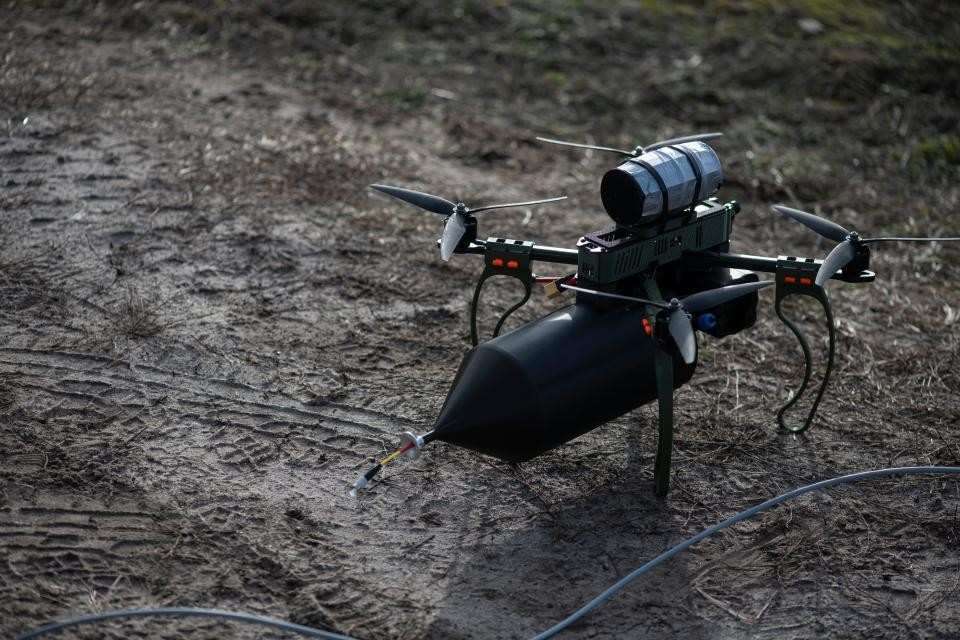Fibre-optic drones are an innovation when it comes to modern warfare, especially if the technologies of electronic jamming are active. Fibre-optic drones are controlled through a thin fibre-optic cable, not radio signals. Because of this, they cannot be jammed or spoofed like other drones can be. The drone is equipped with a spool of cable that deploys as the drone is in flight, having a physical link to the operator. This cable sends high-definition video and control signals, allowing accurate navigation and targeting. Operating for reconnaissance, surveillance, or kamikaze missions, these drones have become an indispensable resource in the Russia-Ukraine conflict because they can navigate contested environments and are relatively inexpensive.
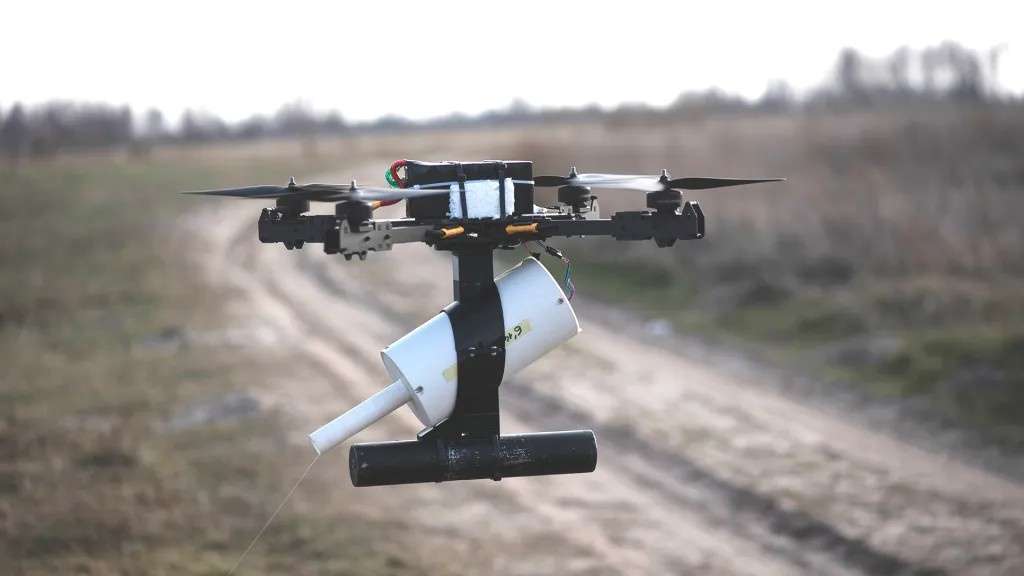
How Fibre-Optic Drones Operate
Fibre-optic drones work in an innovative and practical manner. The drone is launched from a ground station or tactical kit and flies at low altitudes, often in the 10-50 m range. This low flying elevation ensures that radar can’t detect the drone, and if obstacles such as trees or buildings are present, the drone can navigate around them without interfering with the mission. The length of fibre-optic cable used by the drone can range from 10 km to 41 km. The fibre-optic connection ensures that the operator receives a crystal-clear video image from the drone, which in lag-free form, so they can steer the drone with a first-person view (FPV) interface. In contrast to radio-controlled drones, the cable means that the drone is impervious to electronic jammers and can function in a jamming environment. Fibre-optic drones can usually carry small payloads; this can include detachable explosives (e.g., 1-3 kg of explosives, e.g. RPG warheads to carry out kamikaze attacks) or surveillance cameras. They have proved versatile for tactical missions. 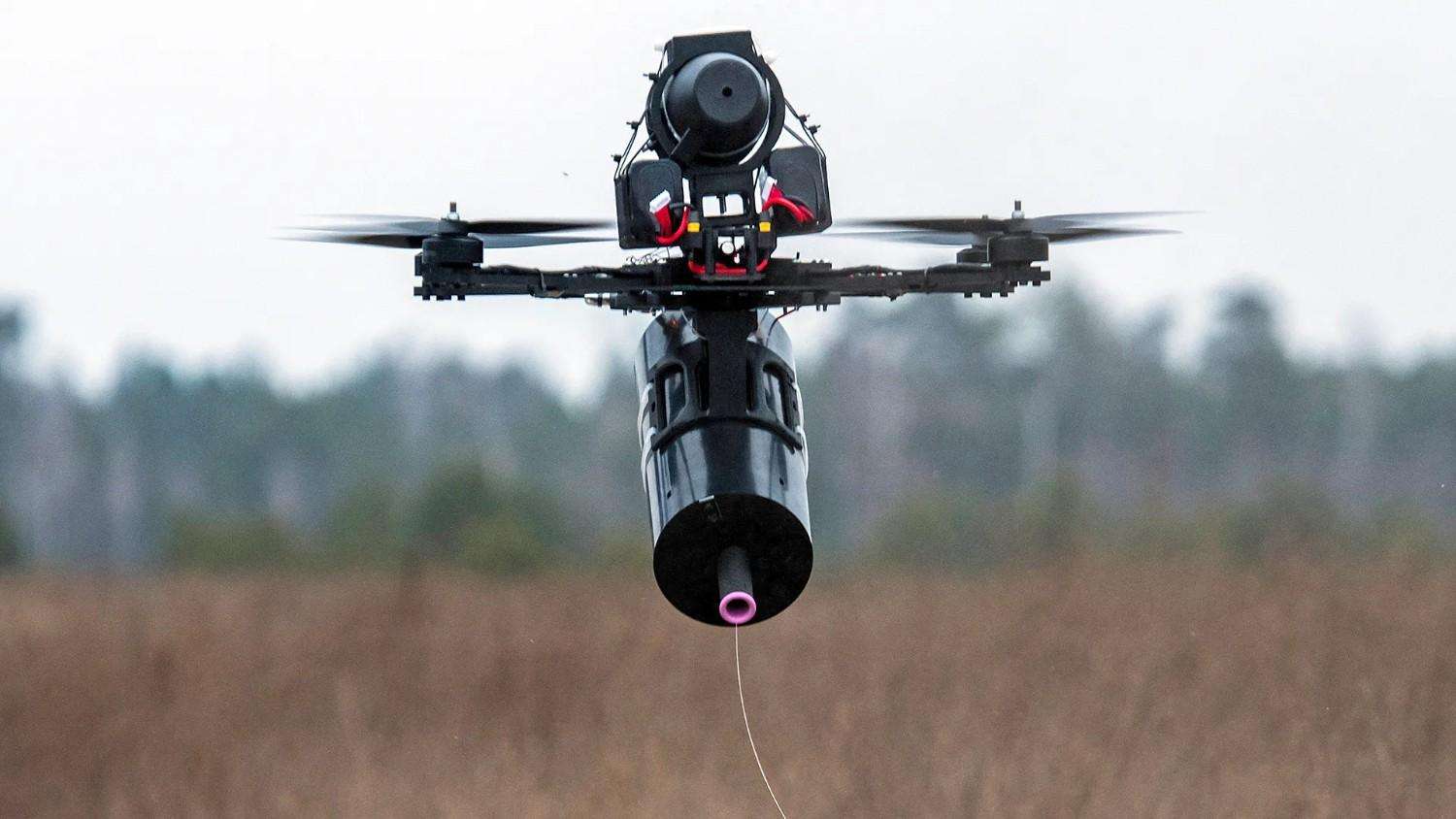
Attack Methods and Tactics
Fibre-optic drones excel in delivering precise, often devastating attacks. Most are designed as kamikaze drones, crashing directly into targets to detonate their explosive payloads. In the Russia-Ukraine conflict, these drones target high-value assets like tanks, artillery, or supply convoys. For example, Ukraine’s Banderyk-Strichka drones have struck Russian T-72 and T-90 tanks, aiming for vulnerable spots like the turret or rear engine to maximize damage. Russia’s Prince Vandal of Novgorod drones, used extensively in the Kursk region in 2024, have targeted Ukrainian supply lines and troop positions, exploding on impact to disrupt operations. Some drones drop small munitions, like grenades, without self-destructing, allowing reuse for surveillance, though their single-use kamikaze design is more common. Attacks are often coordinated with other drones or ground forces. Ukraine, for instance, uses fibre-optic drones to destroy Russian electronic warfare systems, enabling radio-controlled drones to operate freely. Emerging AI technology aids in target recognition, but human operators still make the final attack decisions, ensuring precision in complex environments like urban areas or forests.
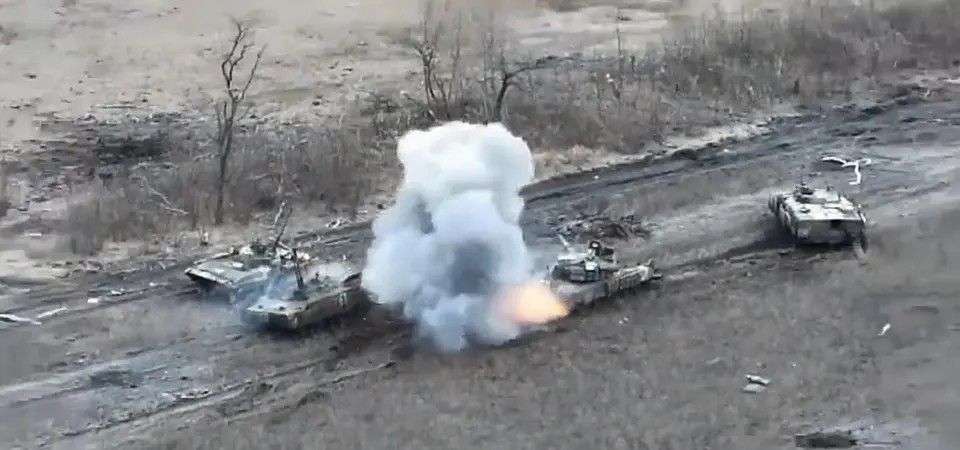
Conflicts and Advancements in Fibre-optic Drone Technology
The Russia-Ukraine conflict has been a major testing ground for fibre-optic drones, with both sides leveraging their unjammable capabilities to gain tactical advantages, while recent advancements highlight their growing global significance. Russia pioneered large-scale deployment in 2024, using drones like the Prince Vandal of Novgorod, often adapted from Chinese Skywalker models, to strike Ukrainian logistics and supply depots in Kursk, disrupting incursions with precise attacks guided by clear video feeds over 20-kilometre cables. Ukraine, starting later, tested models like the Banderyk-Strichka and Khizhak REBOFF in 2024, achieving a record-breaking 41-kilometre range by January 2025. These larger hexacopter drones have struck Russian positions in Donetsk and disabled electronic warfare vehicles, though they are more visible. Both nations are exploring AI integration for improved targeting, though full autonomy remains undeveloped. Beyond this conflict, fibre-optic technology builds on earlier wire-guided systems, such as the U.S. TOW-2 missile from the 1970s and Israel’s Spike missile, suggesting potential adoption in regions like Taiwan for asymmetric warfare. Globally, the success of these drones in Ukraine is driving interest, with companies like Timbercon offering fibre-optic solutions. Despite challenges like cable vulnerabilities and enemy countermeasures, these drones are reshaping battlefield dynamics, offering a low-cost, unjammable solution for tactical superiority.
Drone Comparison Table
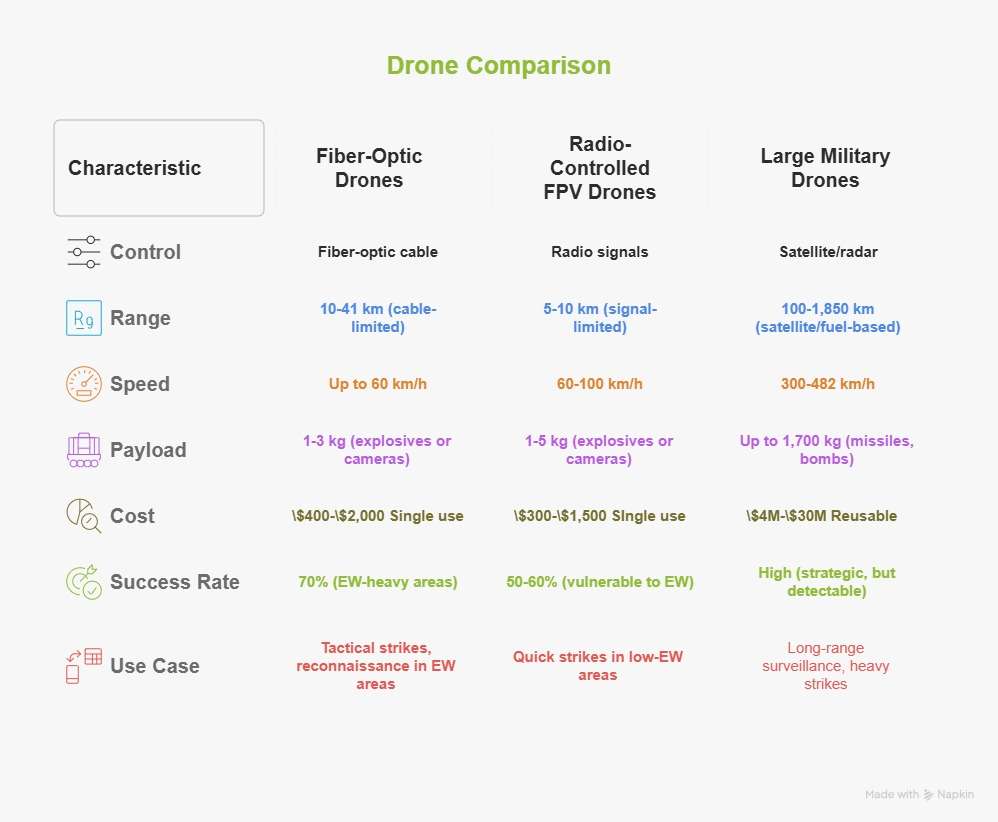
Specialities of Fibre-optic Drones
The standout feature of fibre-optic drones is their immunity to electronic jamming, making them highly effective in environments like Ukraine, where electronic warfare is intense. The fibre-optic cable provides a clear, real-time video feed, allowing operators to target with pinpoint accuracy, even in complex terrain. Flying low to the ground, these drones avoid radar and navigate obstacles like buildings or forests, making them ideal for hitting vehicles, trenches, or small groups. Their low cost, often using off-the-shelf components like Chinese transceivers, enables mass deployment, with a single $2,000 drone capable of destroying a million-dollar tank. However, the cable limits their range and mobility, and skilled operators are required for precision, posing training challenges, especially for Ukraine.
Impact of Fibre-optic Drone Attacks
The battlefield impact of fibre-optic drones is significant. In Ukraine, they account for 60-70% of Russian equipment losses in some areas by early 2025, destroying tanks, artillery, and supply lines. Russia’s use of Kursk disrupted Ukrainian logistics, while Ukraine’s strikes on Russian jamming stations enabled broader drone operations. The silent, hard-to-detect nature of these drones creates fear among soldiers, who cannot rely on electronic defences. Their cost-effectiveness forces enemies to divert resources to countermeasures like shotguns, net guns, or ramming drones, with some developing cable-detection systems. However, the cable’s vulnerability to breaking or entanglement and the limited range restrict their use in dense or distant environments. Ukraine struggles to match Russia’s mass production, relying on foreign investment to scale up.
Conclusion
Fibre-optic drones have emerged as a game-changer in modern warfare, particularly in the Russia-Ukraine conflict. Their ability to operate in electronic warfare-heavy environments, deliver precise strikes, and maintain low costs makes them a formidable tool. While Russia leads in mass deployment, Ukraine is innovating with longer ranges, and global interest is growing. Despite limitations like cable vulnerabilities and training demands, their impact on logistics, morale, and tactics highlights their role in shaping future conflicts. As technology advances, fibre-optic drones are likely to play an even larger role in warfare.

